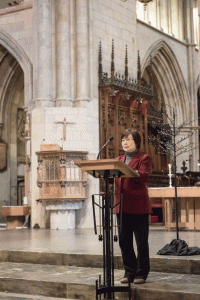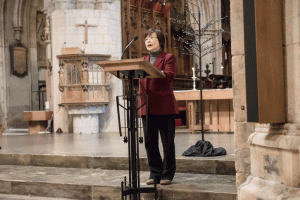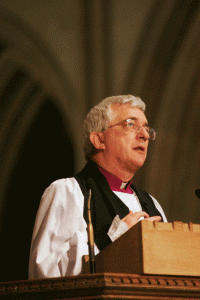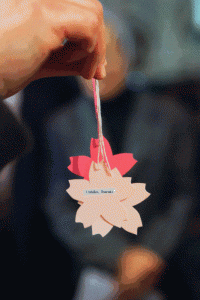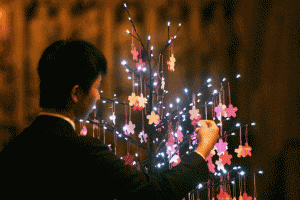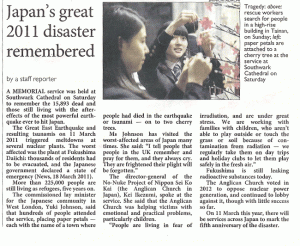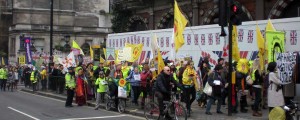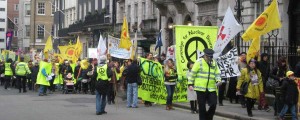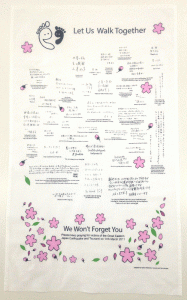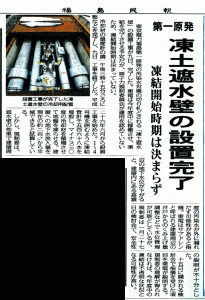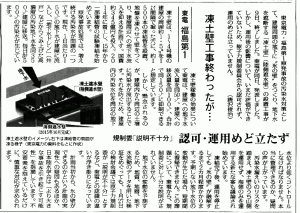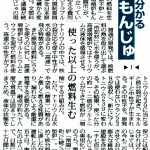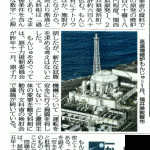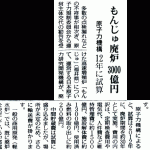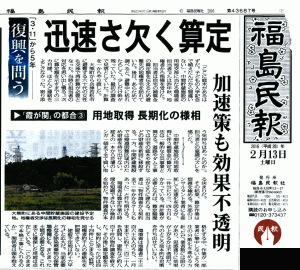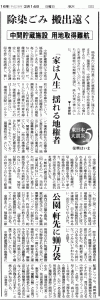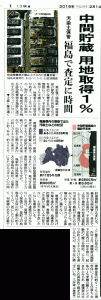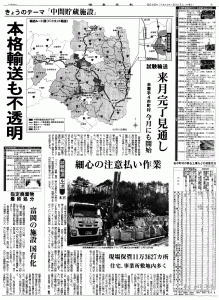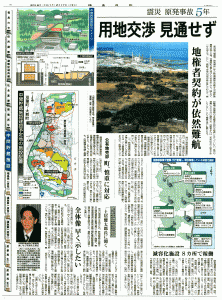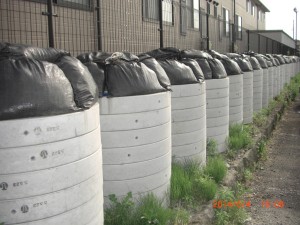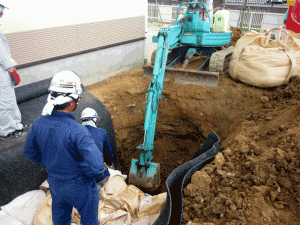Original Japanese written by staffer
The English below written and arranged by Heeday, based on the original Japanese
The English edited by Rev. Dr. Henry French, ELCA
Article from the February 23rd, 2016 edition of the Asahi Shimbun newspaper
▼Click the image to read an English summary of the Japanese article.

Almost five years have passed since the meltdown began at TEPCO’s Fukushima Daiichi. The natural decay of radioactive substances and the decontamination work have brought the radiation level down to some extent. The meltdown, however, is still seriously affecting the living and lifestyles of many people in Fukushima.
Almost five years have passed —
Today, here in Fukushima, we see more parents and children than before at supermarkets buying food produced in Fukushima. We see children’s clothing swinging and drying beside windows. (Hanging washed clothes to dry them is a common practice in Japan.) Still, some 70,000 people, by government order, are living as refugees. For many of them, life is simply not the same since the meltdown. Moreover, troubling issues experienced by the citizens of Fukushima never seem to be resolved.
A mother in agony
Such an issue that causes real agony for a 40-year-old mother, who moved with her husband and child into Koriyama from a coastal region of Fukushima shortly after the meltdown began, has to do with school lunches. Her 11-year-old daughter, a fifth grader, has to take her packed lunch out of her school bag, while some of her class mates serve other children the school provided meal (a common practice at many elementary schools in Japan). Even though the ingredients used in the meals provided by the schools, if they are produced in Fukushima, have passed radioactivity inspections, her mother is deeply worried over the daughter’s health and prepares a packed lunch for her every day.
Issues in the daughter’s class
The daughter has learned to eat the lunch prepared by her mother, saying “I don’t mind having a lunch different from that of my classmates sitting next to me.” Still, she knows that some of her classmates are whispering among themselves: “Is she emotionally sick, avoiding the school meal?” Her classmates used to be good friends, but they will not speak to her now. Says her mother, “Someday, my daughter might fall sick. I am overwhelmed by fear.”
One staffer at Fukushima Prefecture’s board of education has said, “Some, not many, school children carry their packed lunch to school. Some kids wear a mask when they run at a school athletic festival. Different people have different ideas about radiation, and we cannot push our beliefs onto them.”
Article from the February 21st, 2016 edition of the Fukushima Minpo newspaper
▼Click the image to read an English summary of the Japanese article.

In the School Year 2015 (April 2015 through March 2016, in Japan), 27.3% of Fukushima’s school meal ingredients were produced in Fukushima, up from the year before by 5.4%. This is possibly a sign of food safety being restored, to some extent.
Worries still persist
As the chart in the article above shows, since shortly after the 2011 disaster, school meals in Fukushima Prefecture have gradually been using more farm products from the prefecture. Still, a certain mother of an elementary student, resident in Koriyama, has never bought any food produced in Fukushima since the 2011 disaster. She is even hesitant with foods from northern Kanto (just south of Fukushima). Though she lets her child eat school meals, it is simply because she cannot find a practical alternative. Today, five years after the meltdown began, this mother is still worried over food safety. She said she is determined to avoid made-in-Fukushima foods.
She is not alone
Here in Fukushima, countless mothers are worried about radiation, with no one to talk to about their worries. One way or another, a mother’s anxiety will inevitably affect her family and children. Using ingredients from Fukushima can show the world that the prefecture is rebuilding, yet the worries of countless mothers must not be ignored.
Fukushima Minpo has reported on many other troubles caused by the meltdown. Some couples broke up when the mother and her children evacuated alone. Some mothers received compensation for damages suffered, while some of their neighbors did not. Naturally, those neighbors express their anger at those who received compensation.
Professor Sung Won-Cheol of Chukyo University and his fellows have continuously conducted a survey, targeted at mothers having a child between 1 and 2 years of age, since shortly after the meltdown began. The survey covers 9 municipalities in Fukushima Prefecture, including Fukushima City.
In the 2015 survey, almost a half of the respondents, some 1,200 in number, said they were worried over their children (living in Fukushima). Some 30% of the respondents replied with either “Applies” or “Somehow applies” to the question, “Do you avoid foods produced in Fukushima Prefecture?” This ratio shows a sharp decline from the more than 80% who responded that way half a year after the 2011 disaster. About governmental compensation for damages, more than 70% replied that they have experienced some unfairness. Says Prof. Sung, “Everyone has his/her own response to radiation anxieties, and it is hard to counteract. There should at least be some measures to prevent the complaints of some victims from turning into insults directed at those who have received compensation.”
The Japanese author’s wish
Childhood experiences play a crucial role in the development of a child’s mind. In Fukushima and vicinity, radiation is badly affecting the childhoods of many children. Before it is too late, we need to restore an environment wherein parents can take care of their kids in peace.




